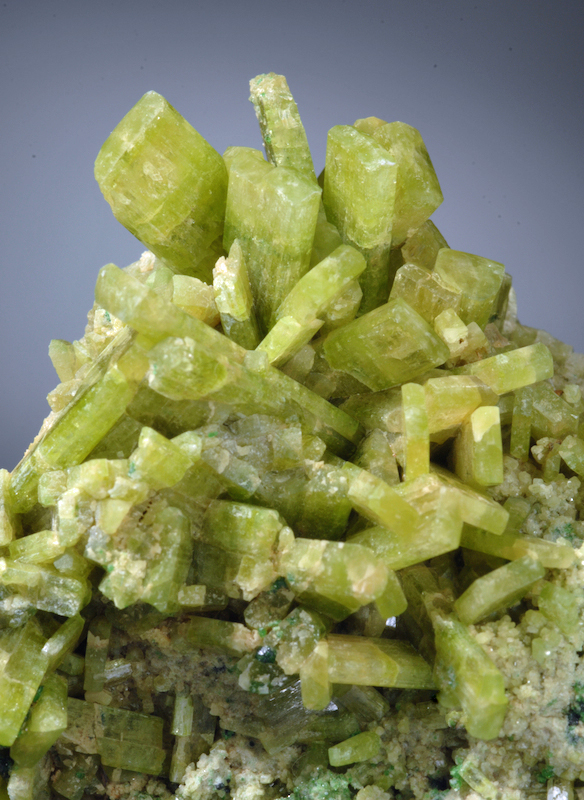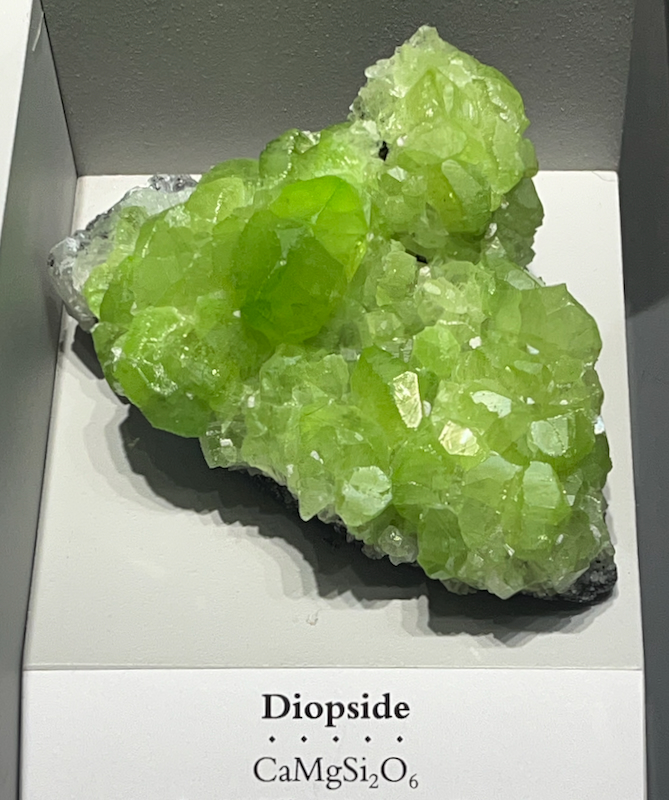Diopside
Diopside is a kind of no-nonsense silicate mineral. It’s usually green, sometimes gray or purplish or other colors, and it’s not quite as hard as quartz but is sometimes used as a gemstone. But if it has enough chromium in it, it can look like an emerald and is called chrome diopside. Diopside is pretty common, and since it contains both silicon and calcium, you can find it with other “calc-silicate” (calcium and silicon) minerals, such as grossular garnet, vesuvianite, and tremolite, as well as calcite (which is just a “calc” mineral). Although it isn’t the most useful mineral, beyond looking nice in jewelry and mineral specimens, it does have one important use: finding diamonds. Chrome diopside often forms in the same kind of rock as diamonds, so when companies are exploring for diamond deposits, they keep an eye out for bright green chrome diopside pieces. If they find them, they’ll dig or drill in that area to see if any diamonds are there. When one mineral tells you another one should be there, it’s called an “indicator mineral.”
| Formula | Group or Type | Shape | Hardness | Specific Gravity | Streak | Luster |
|---|---|---|---|---|---|---|
| CaMgSi2O6 | Pyroxene | Monoclinic | 6 | 3.22–3.38 | White | Vitreous to waxy |


